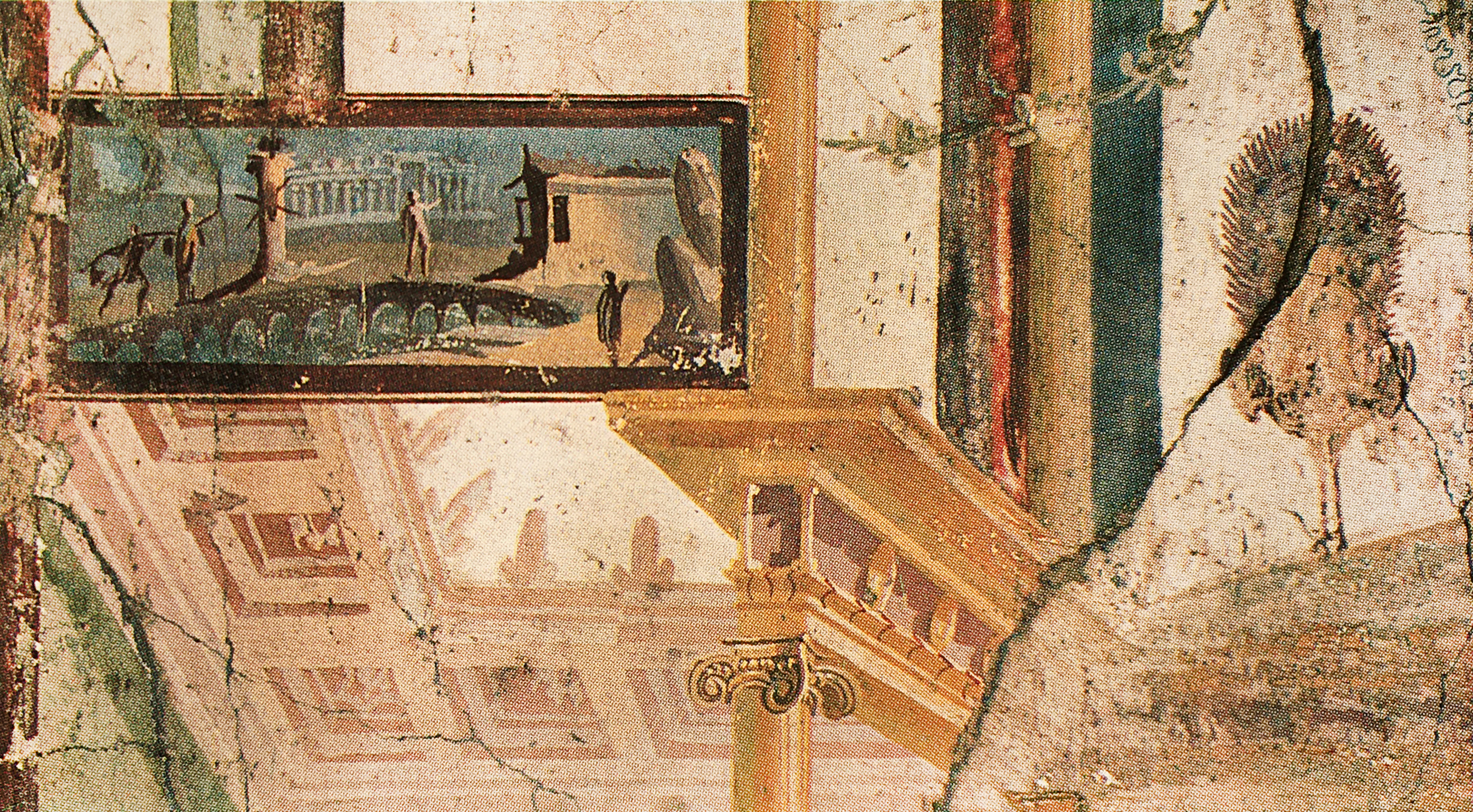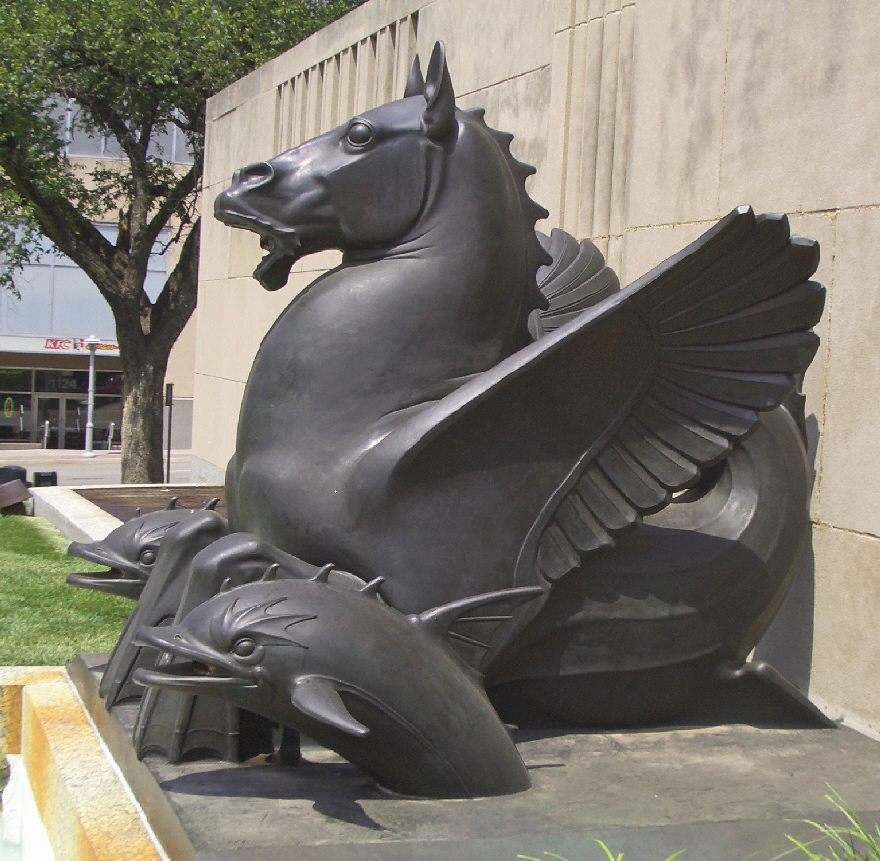|
Fish Plate
:''This article relates to the type of Greek pottery. For the connection bar used in railways, see Fishplate.'' A fish plate is a Greek pottery vessel used by western, Hellenistic Greeks during the fourth century BC. Although invented in fifth-century BC Athens, most of the corpus of surviving painted fish plates originate in Southern Italy, where fourth-century BC Greek settlers, called "Italiotes," manufactured them. The name "fish plate" comes from their usual decoration of seafood items which includes various fish and other marine creatures. Fishes depicted include bream, perch, torpedo fish, tuna, flying fish, puffer fish, scorpion fish, squid, cuttlefish, octopus, scallop, clam, dentalia, murex, sea snail, shrimp, crab, dolphin, hippocamp, etc. Form The form of the plate was called a "pinax" or "pinakion", meaning "tablet," because of its flat shape. The fish plate's form was that of a dimpled disk elevated on a pedestal, in other words, round and flat with a small cup ... [...More Info...] [...Related Items...] OR: [Wikipedia] [Google] [Baidu] |
Fishplate
A fishplate joins two lengths of track A fishplate, splice bar or joint bar is a metal connecting plate used to bolt the ends of two rails into a continuous track. The name is derived from ''fish'', a wooden reinforcement of a "built-up" ship's mast that helped round out its desired profile. The top and bottom faces taper inwards along their short dimensions to create an even alignment between the two rails when the fish plate is wedged into place by tightening its bolts during installation. In rail transport modelling, a fishplate is often a small copper or nickel silver plate that slips onto both rails to provide the functions of maintaining alignment and electrical continuity. History The device was invented by William Bridges Adams in May 1842, because of his dissatisfaction with the scarf joints and other systems of joining rails then in use. He noted that to form the scarf joint the rail was halved in thickness at its ends, where the stress was greatest. It was firs ... [...More Info...] [...Related Items...] OR: [Wikipedia] [Google] [Baidu] |
Octopus
An octopus ( : octopuses or octopodes, see below for variants) is a soft-bodied, eight- limbed mollusc of the order Octopoda (, ). The order consists of some 300 species and is grouped within the class Cephalopoda with squids, cuttlefish, and nautiloids. Like other cephalopods, an octopus is bilaterally symmetric with two eyes and a beaked mouth at the center point of the eight limbs. The soft body can radically alter its shape, enabling octopuses to squeeze through small gaps. They trail their eight appendages behind them as they swim. The siphon is used both for respiration and for locomotion, by expelling a jet of water. Octopuses have a complex nervous system and excellent sight, and are among the most intelligent and behaviourally diverse of all invertebrates. Octopuses inhabit various regions of the ocean, including coral reefs, pelagic waters, and the seabed; some live in the intertidal zone and others at abyssal depths. Most species grow quickly, mature ea ... [...More Info...] [...Related Items...] OR: [Wikipedia] [Google] [Baidu] |
Pinax
In the modern study of the culture of ancient Greece and Magna Graecia, a ''pinax'' (πίναξ) (plural ''pinakes'' - πίνακες), meaning "board", is a votive tablet of painted wood, or terracotta, marble or bronze relief that served as a votive object deposited in a sanctuary or as a memorial affixed within a burial chamber. Such ''pinakes'' feature in the classical collections of most comprehensive museums. In the Third and Fourth Style of ancient Roman mural painting, a pinax was a painted framed picture usually in the main zone of the wall surface. Other uses To the ancient Greeks ''pinax'' seems also to have been a general term for a plate, but this is generally not followed in modern archaeological usage. In daily life ''pinax'' might equally denote a wax-covered writing tablet. In Christian contexts, painted icons ("images") are ''pinakes''. In the theatre of ancient Greece, they were images probably usually painted on cloth, but also carved either in stone or w ... [...More Info...] [...Related Items...] OR: [Wikipedia] [Google] [Baidu] |
Scorpion Fish Painter, Piatti Da Pesce A Figure Rosse, 380-75 Ac
Scorpions are predatory arachnids of the order Scorpiones. They have eight legs, and are easily recognized by a pair of grasping pincers and a narrow, segmented tail, often carried in a characteristic forward curve over the back and always ending with a stinger. The evolutionary history of scorpions goes back 435 million years. They mainly live in deserts but have adapted to a wide range of environmental conditions, and can be found on all continents except Antarctica. There are over 2,500 described species, with 22 extant (living) families recognized to date. Their taxonomy is being revised to account for 21st-century genomic studies. Scorpions primarily prey on insects and other invertebrates, but some species hunt vertebrates. They use their pincers to restrain and kill prey, or to prevent their own predation. The venomous sting is used for offense and defense. During courtship, the male and female grasp each other's pincers and dance while he tries to move her onto his ... [...More Info...] [...Related Items...] OR: [Wikipedia] [Google] [Baidu] |
Piatto Da Pesce A Figure Rosse, 380-75 Ac
Piatto is a ''comune'' (municipality) in the Province of Biella in the Italian region Piedmont, located about northeast of Turin and about northwest of Biella. On 31 December 2004, it had a population of 527 and an area of .All demographics and other statistics: Italian statistical institute Istat. Piatto borders the municipalities of Bioglio, Callabiana, Camandona, Mosso, Quaregna, Ternengo, Valdengo Valdengo is a ''comune'' (municipality) in the Province of Biella in the Italian region Piedmont, located about northeast of Turin and about southeast of Biella. Valdengo borders the following municipalities: Candelo, Cerreto Castello, Piatto, Q ..., Vallanzengo, Valle San Nicolao and Veglio. Demographic evolution Colors= id:lightgrey value:gray(0.9) id:darkgrey value:gray(0.8) id:sfondo value:rgb(1,1,1) id:barra value:rgb(0.6,0.7,0.8) ImageSize = width:455 height:303 PlotArea = left:50 bottom:50 top:30 right:30 DateFormat = x.y Period = from:0 till:1 ... [...More Info...] [...Related Items...] OR: [Wikipedia] [Google] [Baidu] |
Hippocamp
The hippocampus or hippocamp, also ''hippokampos'' (plural: hippocampi or hippocamps; grc, ἱππόκαμπος, from , "horse" and , "sea monster"Word origin of ''Hippocampus'' at ; compare the monster .), often called a sea-horse in English, is a mythological creature shared by n,Israel Antiquities Authority [...More Info...] [...Related Items...] OR: [Wikipedia] [Google] [Baidu] |
Dolphin
A dolphin is an aquatic mammal within the infraorder Cetacea. Dolphin species belong to the families Delphinidae (the oceanic dolphins), Platanistidae (the Indian river dolphins), Iniidae (the New World river dolphins), Pontoporiidae (the brackish dolphins), and the extinct Lipotidae (baiji or Chinese river dolphin). There are 40 extant species named as dolphins. Dolphins range in size from the and Maui's dolphin to the and orca. Various species of dolphins exhibit sexual dimorphism where the males are larger than females. They have streamlined bodies and two limbs that are modified into flippers. Though not quite as flexible as seals, some dolphins can briefly travel at speeds of per hour or leap about . Dolphins use their conical teeth to capture fast-moving prey. They have well-developed hearing which is adapted for both air and water. It is so well developed that some can survive even if they are blind. Some species are well adapted for diving to great depths. The ... [...More Info...] [...Related Items...] OR: [Wikipedia] [Google] [Baidu] |
Crab
Crabs are decapod crustaceans of the infraorder Brachyura, which typically have a very short projecting "tail" (abdomen) ( el, βραχύς , translit=brachys = short, / = tail), usually hidden entirely under the thorax. They live in all the world's oceans, in freshwater, and on land, are generally covered with a thick exoskeleton, and have a single pair of pincers. They first appeared during the Jurassic Period. Description Crabs are generally covered with a thick exoskeleton, composed primarily of highly mineralized chitin, and armed with a pair of chelae (claws). Crabs vary in size from the pea crab, a few millimeters wide, to the Japanese spider crab, with a leg span up to . Several other groups of crustaceans with similar appearances – such as king crabs and porcelain crabs – are not true crabs, but have evolved features similar to true crabs through a process known as carcinisation. Environment Crabs are found in all of the world's oceans, as well as in fresh w ... [...More Info...] [...Related Items...] OR: [Wikipedia] [Google] [Baidu] |
Shrimp
Shrimp are crustaceans (a form of shellfish) with elongated bodies and a primarily swimming mode of locomotion – most commonly Caridea and Dendrobranchiata of the decapod order, although some crustaceans outside of this order are referred to as "shrimp". More narrow definitions may be restricted to Caridea, to smaller species of either group or to only the marine species. Under a broader definition, ''shrimp'' may be synonymous with prawn, covering stalk-eyed swimming crustaceans with long, narrow muscular tails (abdomens), long whiskers ( antennae), and slender legs. Any small crustacean which resembles a shrimp tends to be called one. They swim forward by paddling with swimmerets on the underside of their abdomens, although their escape response is typically repeated flicks with the tail driving them backwards very quickly. Crabs and lobsters have strong walking legs, whereas shrimp have thin, fragile legs which they use primarily for perching.Rudloe & Rudloe (2009 ... [...More Info...] [...Related Items...] OR: [Wikipedia] [Google] [Baidu] |
Sea Snail
Sea snail is a common name for slow-moving marine gastropod molluscs, usually with visible external shells, such as whelk or abalone. They share the taxonomic class Gastropoda with slugs, which are distinguished from snails primarily by the absence of a visible shell. Definition Determining whether some gastropods should be called sea snails is not always easy. Some species that live in brackish water (such as certain neritids) can be listed as either freshwater snails or marine snails, and some species that live at or just above the high tide level (for example species in the genus '' Truncatella'') are sometimes considered to be sea snails and sometimes listed as land snails. Anatomy Sea snails are a very large group of animals and a very diverse one. Most snails that live in salt water respire using a gill or gills; a few species, though, have a lung, are intertidal, and are active only at low tide when they can move around in the air. These air-breathing species includ ... [...More Info...] [...Related Items...] OR: [Wikipedia] [Google] [Baidu] |
Murex
''Murex'' is a genus of medium to large sized predatory tropical sea snails. These are carnivorous marine gastropod molluscs in the family Muricidae, commonly called "murexes" or "rock snails".Houart, R.; Gofas, S. (2010). Murex Linnaeus, 1758. In: Bouchet, P.; Gofas, S.; Rosenberg, G. (2010) World Marine Mollusca database. Accessed through: World Register of Marine Species at http://www.marinespecies.org/aphia.php?p=taxdetails&id=138196 on 2011-04-09 The common name murex is still used for many species in the family Muricidae which were originally given the Latin generic name ''Murex'' in the past, but have more recently been regrouped into different newer genera. The word ''murex'' was used by Aristotle in reference to these kinds of snails, thus making it one of the oldest classical seashell names still in use by the scientific community. Fossil records This genus is known in the fossil records from the Cretaceous to the Quaternary (age range: from 125.45 to 0.0 million ye ... [...More Info...] [...Related Items...] OR: [Wikipedia] [Google] [Baidu] |





.jpg)

.jpg)
